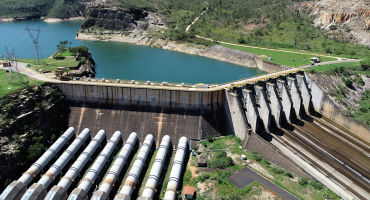- Client Portfolio Manager
Skip to main content
- Funds
- Insights
- Capabilities
- About Us
- My Account
United States, Institutional
Changechevron_rightThank you for your registration
You will shortly receive an email with your unique link to our preference center.
The views expressed are those of the authors at the time of writing. Other teams may hold different views and make different investment decisions. The value of your investment may become worth more or less than at the time of original investment. While any third-party data used is considered reliable, its accuracy is not guaranteed. For professional, institutional, or accredited investors only.
We believe Donald Trump’s return to the White House is an opportune moment to take stock of what we’ve learned as emerging markets investors during his first term. Events could unfold in a different direction than markets currently assume, given President Trump’s inherent unpredictability, but we believe that revisiting the outcomes of his first administration can help prepare for the unexpected.
Counterintuitively perhaps, emerging markets (EM) posted positive results under President Trump’s first term, achieving 13.6% annualised growth compared to 14.0% for the MSCI World Index.1 While this positive scenario may not repeat itself, several factors give us cause to be constructive over the longer term, notably:
A more attractive risk-return equation
The broad EM equity universe is trading at the same valuation level as 2016. Some markets, such as China, are even cheaper. By contrast, developed markets’ cyclically adjusted price-to-earnings (P/E) ratio moved 30% higher over the period, while the US market has become 60% more expensive, arguably limiting further upside for MSCI US and World indices.2
EM equities have not had a meaningful positive calendar year of inflows since 2021 and suffered near-record levels of outflows since the election according to recent EPFR data.3 Developed markets, and the US in particular, have been the beneficiary of this reallocation trade. The US now makes up almost 75% of the MSCI World Index. An underweight EM starting point is consensus across markets, which provides a solid foundation for potential flows over time.
Visibility in EM remains low but we find growing instances of improving fundamentals, particularly in China and India, which account for almost 50% of the EM universe.
Expect the unexpected
If we have learnt anything from President Trump, it is to expect the unexpected. The unexpected today is trade deals built on collaborative discussion. Aggressive negotiating tactics will be part of the new administration’s playbook; however, the economic costs of trade disruptions will be watched very closely. Having won the recent US election due to a cost-of-living crisis, pushing up inflation and slowing growth are unlikely to be tolerated for long by an uneasy electorate or a president sensitive to the mood of the nation. We believe that this unpredictability is now largely discounted. As markets broaden after an era of US exceptionalism, having an allocation to EM may turn out to be a valuable source of diversification in portfolios. After all, EM investments tend to reward the most when expectations are at their lowest, and today may just be one of those rare opportunities.
1Source: Analysis by Wellington Management using MSCI data from 2017 – 2020 | Data as of December 2024. | 2Source: Jefferies. Analysis by Wellington Management using data from 2017 – 2021 | Data as of December 2024. | 3Source: EFPR | Data as of December 2024. | 4Source: FactSet and Wellington Management | Data as of December 2024.
Experts


Opportunity ahead: Optimism or illusion?
Continue readingAsset Allocation Outlook
Continue readingMultiple authors
Broadening impact through multi-theme fixed income investments
Continue readingChart in focus: Three reasons to revisit emerging markets
Continue reading(Re)emerging markets: 10 reasons for optimism
Continue readingMultiple authors
Chart in Focus: The need to differentiate market growth from macro growth
Continue readingTime to capitalise on the evolving role of bonds?
Continue readingURL References
Related Insights
Stay up to date with the latest market insights and our point of view.
Thank you for your registration
You will shortly receive an email with your unique link to our preference center

Opportunity ahead: Optimism or illusion?
Explore our latest views on risks and opportunities across global capital markets.

Asset Allocation Outlook
How to evolve your portfolio for the latest market conditions? Explore the latest monthly snapshot of Wellington Solutions' asset class views.
Multiple authors

Broadening impact through multi-theme fixed income investments
Multi-theme fixed income impact investments can drive sustainable development by aligning with multiple Sustainable Development Goals, ensuring broad-based impact.

Chart in focus: Three reasons to revisit emerging markets
Multi-Asset Strategist Nanette Abuhoff-Jacobson illustrates the case for emerging markets in three charts.

(Re)emerging markets: 10 reasons for optimism
Our experts identify 10 reasons why now may be the time for investors to reconsider emerging markets.
Multiple authors

Chart in Focus: The need to differentiate market growth from macro growth
Macro growth and earnings growth have been misaligned for the last 15 years, particularly in the US and China, but in opposite directions. For equity investors, what would be the key to identify real growth?

Time to capitalise on the evolving role of bonds?
We outline why we think the new economic era is elevating the role of bonds as a source of attractive and stable income, downside protection and portfolio diversification.

Impact investing in emerging markets: Growing opportunities, shifting challenges
Members of our impact bond team discuss their evolving emerging markets opportunity set and the importance of a bottom-up approach to value creation.
Multiple authors
Emerging markets debt: resilience in the face of adversity
Our expert discusses why she is positive on the outlook for emerging markets debt, even though growth will likely slow.

Will a “Goldilocks” economy be just right for equity markets?
We provide an outlook on the ongoing shift to new investment regime, and the market segments that we expect will most heavily influence global equity performance in the coming year.

Beyond China: what does the rest of the EM equity world have to offer?
For investors contemplating a separate allocation to EM ex-China equities, members of our iStrat Team share their research on the composition of the opportunity set, the growing divergence in the behavior of EM ex-China equities and Chinese equities, and the long-term market outlook.
URL References
Related Insights
© Copyright 2025 Wellington Management Company LLP. All rights reserved. WELLINGTON MANAGEMENT ® is a registered service mark of Wellington Group Holdings LLP. For institutional or professional investors only.
Enjoying this content?
Get similar insights delivered straight to your inbox. Simply choose what you’re interested in and we’ll bring you our best research and market perspectives.
Thank you for joining our email preference center.
You’ll soon receive an email with a link to access and update your preferences.